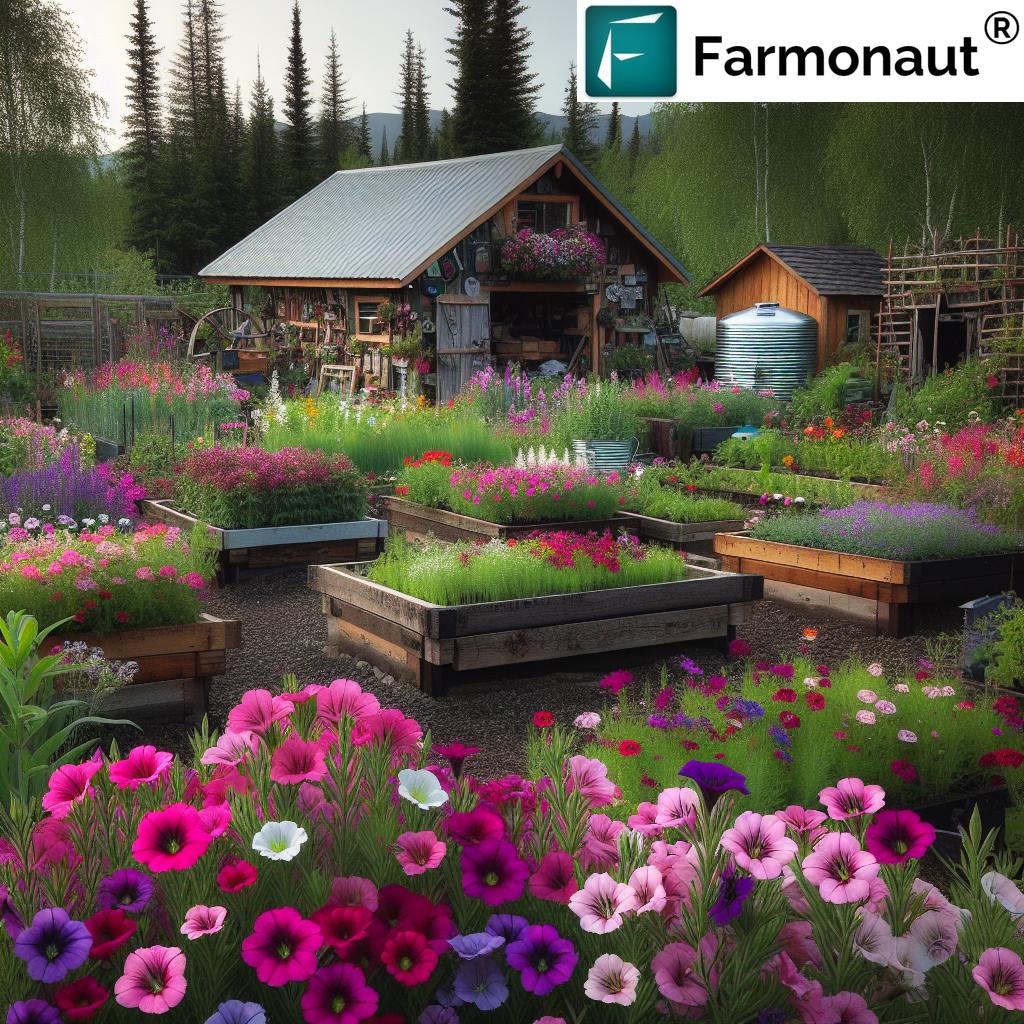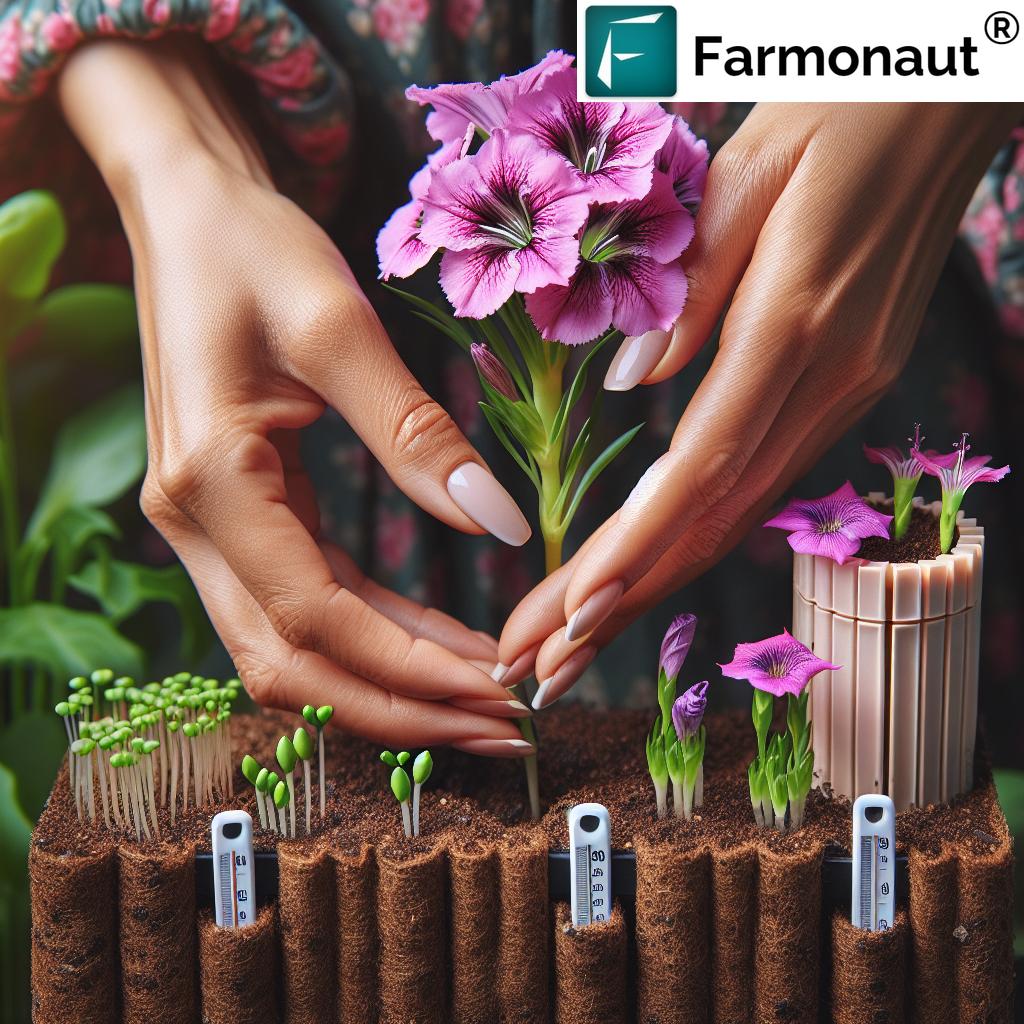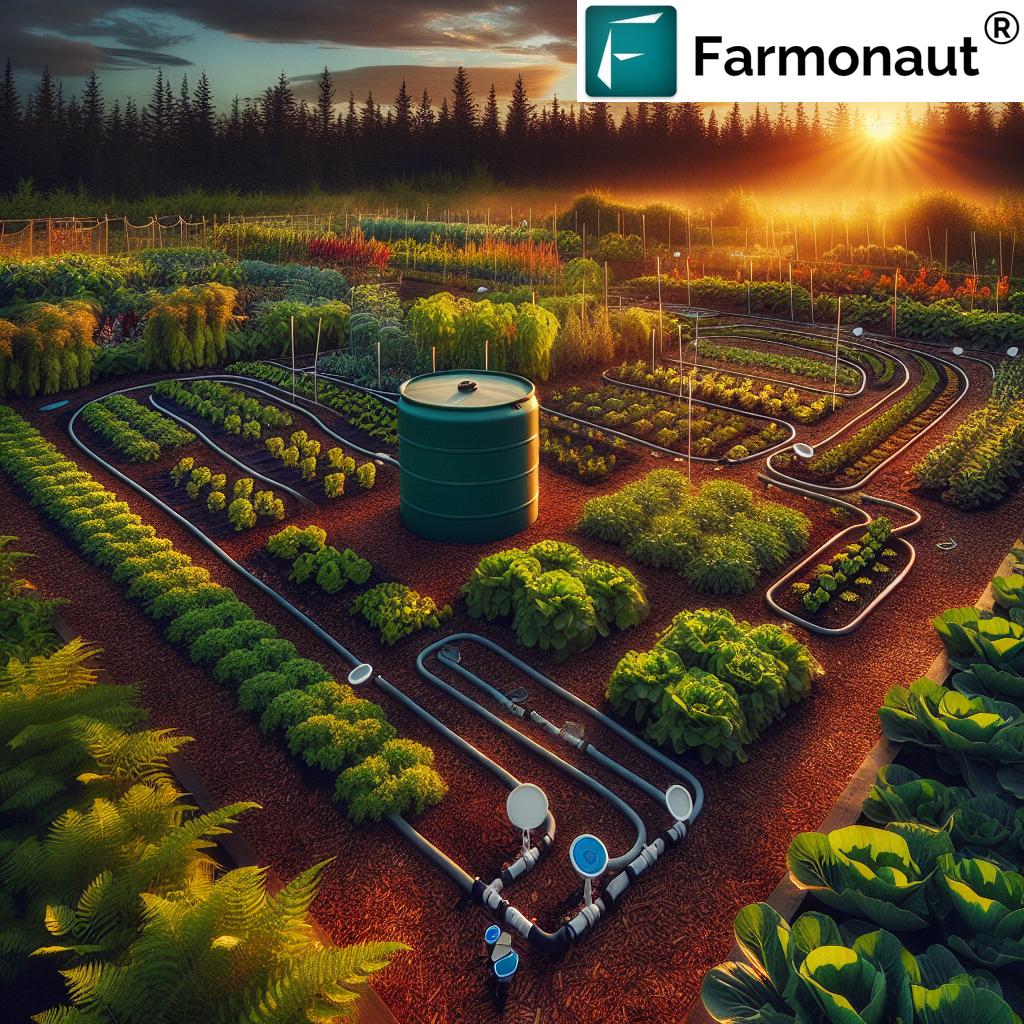Ultimate Guide: How to Grow Vibrant Clarkia in Your Canadian Garden for Pollinators
Welcome to our comprehensive guide on growing vibrant Clarkia in your Canadian garden! In this article, we’ll explore how to cultivate these beautiful annual flowers, creating a pollinator-friendly space that’s both stunning and sustainable. Whether you’re a seasoned gardener or just starting out, our expert tips will help you transform your outdoor area into a thriving, colorful landscape that attracts beneficial insects and adds charm to your garden.

“Clarkia, a drought-resistant annual flower, can thrive in small spaces as little as 6-12 inches apart.”
Understanding Clarkia: A Canadian Garden Gem
Clarkia, also known as Farewell-to-Spring or Godetia, is a charming annual flower that’s perfect for Canadian gardens. These hardy plants are native to western North America and are renowned for their vibrant colors and delicate, cup-shaped blooms. Clarkia is not only beautiful but also drought-resistant, making it an excellent choice for space-efficient gardening in small farms and gardens across Canada.
Why Choose Clarkia for Your Canadian Garden?
- Drought-resistant: Ideal for water-conscious gardening
- Attracts pollinators: Bees and butterflies love Clarkia
- Space-efficient: Perfect for small gardens and farms
- Low-maintenance: Easy to grow and care for
- Long blooming period: Flowers from late spring to early fall
Now that we understand the benefits of growing Clarkia, let’s dive into the step-by-step process of cultivating these beautiful flowers in your Canadian garden.
Preparing Your Soil for Clarkia
The first step in successful Clarkia cultivation is proper soil preparation. These flowers thrive in well-draining soil with a slightly acidic to neutral pH (6.0-7.0). Here’s how to prepare your garden for Clarkia:
- Test your soil: Use a soil testing kit to determine pH and nutrient levels.
- Amend the soil: Add organic matter like compost or well-rotted manure to improve drainage and fertility.
- Loosen the soil: Use a garden fork or tiller to loosen the soil to a depth of 8-10 inches.
- Level the area: Rake the soil smooth to create an even planting surface.
For container gardening, use a high-quality potting mix with added perlite or vermiculite for improved drainage.
Planting Clarkia Seeds
Clarkia is typically grown from seeds, which can be sown directly in the garden or started indoors for earlier blooms. Here’s how to plant Clarkia seeds:
Direct Sowing
- Sow seeds in spring after the risk of frost has passed
- Space seeds 6-12 inches apart and lightly cover with soil
- Keep the soil moist until germination occurs (usually 7-14 days)
Starting Indoors
- Start seeds 6-8 weeks before the last expected frost date
- Use biodegradable pots filled with a seed-starting mix
- Plant seeds 1/4 inch deep and keep soil moist
- Provide ample light and maintain temperatures around 60-70°F (15-21°C)
- Transplant seedlings outdoors after hardening off
“Crowd planting Clarkia can increase flower production by up to 30% compared to traditional spacing methods.”
Optimal Garden Setup for Clarkia
Creating the perfect garden setup for Clarkia ensures healthy growth and abundant blooms. Consider the following factors:
- Sunlight: Choose a location that receives full sun to partial shade
- Soil drainage: Ensure good drainage to prevent root rot
- Wind protection: Provide shelter from strong winds to protect delicate stems
- Companion planting: Plant Clarkia alongside other pollinator-friendly flowers for a diverse ecosystem
For small farms and gardens, consider implementing space-efficient gardening techniques such as vertical gardening or raised beds to maximize your Clarkia yield.

Caring for Your Clarkia Plants
Proper care is essential for maintaining healthy Clarkia plants and extending their blooming period. Follow these maintenance tips:
- Watering: Keep soil consistently moist but not waterlogged
- Fertilizing: Apply a balanced, water-soluble fertilizer every 4-6 weeks
- Mulching: Add a 2-inch layer of organic mulch to retain moisture and suppress weeds
- Deadheading: Remove spent blooms to encourage continuous flowering
- Staking: Provide support for taller varieties to prevent wind damage
By following these care instructions, you’ll ensure your Clarkia plants thrive throughout the growing season.
Attracting Pollinators with Clarkia
One of the great benefits of growing Clarkia is its ability to attract pollinators to your garden. Here’s how to maximize this benefit:
- Plant Clarkia in groups to create larger areas of color
- Include a variety of Clarkia species and colors
- Provide a water source for pollinators, such as a shallow birdbath
- Avoid using pesticides that can harm beneficial insects
- Plant other pollinator-friendly flowers nearby for diversity
By creating a pollinator-friendly garden, you’re not only enhancing the beauty of your space but also supporting local ecosystems.
Extending the Blooming Period
To enjoy Clarkia blooms for an extended period, try these techniques:
- Succession planting: Sow seeds every 2-3 weeks for continuous blooms
- Deadheading: Remove spent flowers regularly to encourage new growth
- Proper care: Maintain consistent watering and fertilizing schedules
- Variety selection: Choose early, mid, and late-season blooming varieties
With these strategies, you can enjoy vibrant Clarkia flowers from late spring well into the fall.
Harvesting Clarkia for Cut Flowers
Clarkia makes excellent cut flowers, adding a touch of elegance to any bouquet. Here’s how to harvest them properly:
- Cut stems in the early morning or late evening when temperatures are cooler
- Choose flowers that are just beginning to open
- Use clean, sharp scissors to cut stems at a 45-degree angle
- Immediately place cut stems in cool water
- Remove any leaves that will be below the waterline in the vase
With proper care, Clarkia cut flowers can last up to a week in a vase, bringing the beauty of your garden indoors.
Sustainable Small Farm Practices with Clarkia
For those managing small farms or larger gardens, incorporating Clarkia into your sustainable farming practices can be beneficial. Here’s how:
- Use Clarkia as a cover crop to improve soil health
- Integrate Clarkia into crop rotation plans to break pest and disease cycles
- Plant Clarkia as border plants to attract beneficial insects to your crops
- Harvest Clarkia seeds to use in future plantings or to sell as a value-added product
By incorporating Clarkia into your small farm or large garden, you’re promoting biodiversity and sustainable agricultural practices.
Troubleshooting Common Clarkia Issues
While Clarkia is generally easy to grow, you may encounter some challenges. Here are solutions to common problems:
- Damping off: Improve soil drainage and avoid overwatering
- Powdery mildew: Ensure good air circulation and avoid overhead watering
- Aphids: Spray plants with a strong stream of water or use insecticidal soap
- Slugs and snails: Use organic slug baits or create barriers around plants
- Lack of blooms: Ensure plants receive enough sunlight and proper nutrition
By addressing these issues promptly, you can maintain healthy, vibrant Clarkia plants throughout the growing season.
Clarkia in Container Gardens
Don’t have a large garden? No problem! Clarkia is well-suited for container gardening, making it perfect for balconies, patios, or small urban spaces. Here’s how to grow Clarkia in pots:
- Choose containers at least 8 inches deep with good drainage holes
- Use a high-quality potting mix with added perlite or vermiculite
- Plant seeds or seedlings as you would in a garden bed
- Water more frequently, as containers dry out faster than garden soil
- Fertilize every 2-3 weeks with a balanced, water-soluble fertilizer
Container-grown Clarkia can be just as beautiful and prolific as those grown in garden beds, bringing color and life to any outdoor space.
Companion Planting with Clarkia
Enhance your garden’s biodiversity and beauty by companion planting Clarkia with other flowers and crops. Here are some great companions for Clarkia:
- Cosmos: Similar growing conditions and complementary colors
- Marigolds: Repel pests and add vibrant colors
- Alyssum: Provides ground cover and attracts beneficial insects
- Beans and peas: Clarkia can benefit from the nitrogen-fixing properties of legumes
- Lavender: Adds fragrance and attracts pollinators
By thoughtfully combining Clarkia with these companion plants, you’ll create a diverse, healthy, and visually appealing garden ecosystem.
Utilizing Technology for Optimal Clarkia Growth
In today’s digital age, technology can play a significant role in optimizing your Clarkia cultivation. Farmonaut, a leading agricultural technology company, offers innovative solutions that can benefit gardeners and small-scale farmers alike.
Here’s how Farmonaut’s technology can enhance your Clarkia growing experience:
- Satellite-based crop monitoring: Track your Clarkia’s health and growth patterns using multispectral satellite imagery
- AI-powered advisory system: Receive personalized recommendations for optimal care based on real-time data
- Weather forecasting: Plan your gardening activities with accurate, localized weather predictions
- Resource management: Optimize water and fertilizer usage for sustainable Clarkia cultivation
By leveraging these technological tools, you can take your Clarkia gardening to the next level, ensuring healthier plants and more abundant blooms.
Clarkia Growing Guide for Canadian Gardens
| Growing Stage | Time of Year | Action Required | Tips for Success | Benefits for Pollinators |
|---|---|---|---|---|
| Soil Preparation | Early Spring | Test and amend soil, loosen to 8-10 inches deep | Add organic matter for improved drainage | Healthy soil supports robust plants, providing more nectar |
| Planting | Late Spring (after frost risk) | Sow seeds directly or transplant seedlings | Space plants 6-12 inches apart | Proper spacing allows for more blooms, attracting pollinators |
| Early Growth | Late Spring to Early Summer | Water regularly, apply mulch | Keep soil consistently moist but not waterlogged | Strong plant growth leads to more flowers for pollinators |
| Flowering | Mid-Summer to Fall | Deadhead regularly, fertilize every 4-6 weeks | Remove spent blooms to encourage continuous flowering | Extended blooming period provides long-term food source for pollinators |
| Maintenance | Throughout Growing Season | Monitor for pests, stake if necessary | Use organic pest control methods to protect beneficial insects | Healthy plants produce more nectar and pollen |
| Seed Collection | Late Fall | Allow some flowers to go to seed, collect when dry | Store seeds in a cool, dry place for next season | Leaving some seed heads provides winter food for birds |
Frequently Asked Questions
Q: When is the best time to plant Clarkia in Canada?
A: The best time to plant Clarkia in Canada is in late spring, after the risk of frost has passed. This is typically from mid-May to early June, depending on your specific region.
Q: How often should I water my Clarkia plants?
A: Water your Clarkia plants when the top inch of soil feels dry. In general, this means watering once or twice a week, depending on rainfall and temperature. Avoid overwatering, as Clarkia prefers well-draining soil.
Q: Can Clarkia survive Canadian winters?
A: Clarkia is an annual plant, which means it completes its lifecycle in one growing season. It will not survive Canadian winters outdoors. However, you can collect seeds in the fall to replant the following spring.
Q: How can I extend the blooming period of my Clarkia?
A: To extend the blooming period, regularly deadhead spent flowers, provide consistent care, and consider succession planting every 2-3 weeks. Also, choosing a mix of early, mid, and late-season varieties can prolong the overall blooming period in your garden.
Q: Are there any pests or diseases I should watch out for when growing Clarkia?
A: While Clarkia is generally resistant to pests and diseases, watch out for aphids, slugs, and powdery mildew. Maintain good air circulation, avoid overhead watering, and use organic pest control methods if issues arise.
Conclusion
Growing Clarkia in your Canadian garden is a rewarding experience that brings beauty, color, and beneficial pollinators to your outdoor space. By following the guidelines in this comprehensive guide, you’ll be well-equipped to cultivate vibrant Clarkia flowers that thrive in your unique garden environment.
Remember to prepare your soil properly, choose the right planting time, and provide consistent care throughout the growing season. With a little patience and attention, you’ll soon be enjoying a stunning display of Clarkia blooms that not only enhance your garden’s aesthetics but also support local pollinators and contribute to a healthier ecosystem.
Whether you’re gardening in a small urban space or managing a larger farm, Clarkia’s versatility and low-maintenance nature make it an excellent choice for gardeners of all levels. So why wait? Start planning your Clarkia garden today and get ready to enjoy a season full of vibrant colors and buzzing pollinators!
For those looking to take their gardening to the next level, consider exploring the innovative solutions offered by Farmonaut. Their satellite-based crop monitoring and AI-powered advisory systems can provide valuable insights to help you optimize your Clarkia cultivation and overall garden management.
Happy gardening, and may your Canadian garden flourish with the beauty of Clarkia!
Explore Farmonaut’s Tools for Enhanced Gardening:
For developers interested in integrating Farmonaut’s technology:
Farmonaut API
API Developer Docs
Download Farmonaut’s Mobile Apps:
Farmonaut Subscriptions
















